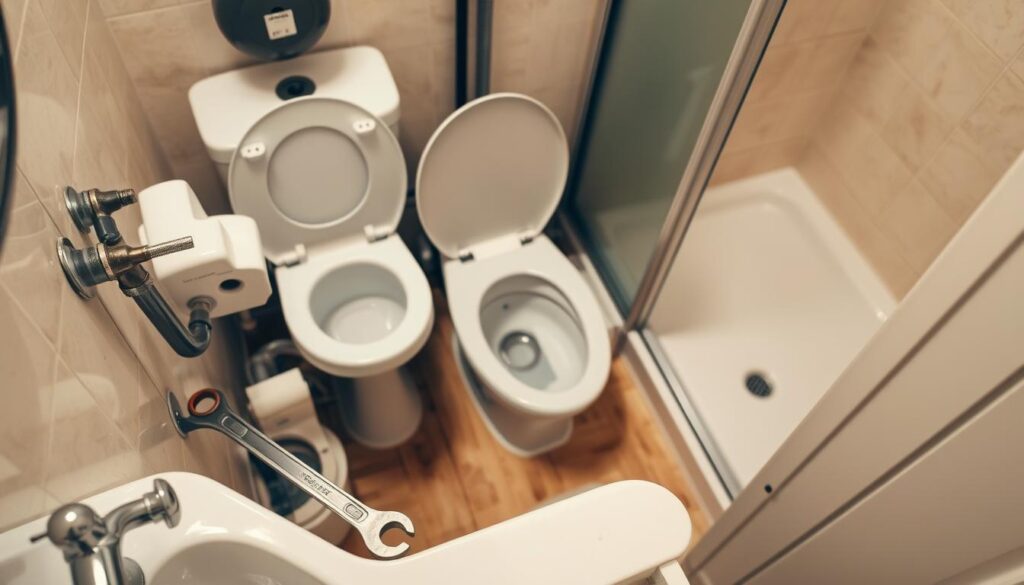Understanding your home’s plumbing systems is crucial for maintaining a safe and comfortable living environment. The three primary systems – water supply, water heating, and drainage – work together to provide clean water and remove wastewater efficiently. Regular maintenance is essential to prevent common issues like leaky faucets and clogged drains.
By being proactive and performing routine checks, homeowners can identify potential problems before they become major issues. For instance, knowing how to shut off the main water supply in case of an emergency can save time and prevent damage. For more complex issues, consulting plumbing experts can provide trusted repairs and maintenance guidance.
Key Takeaways
- Regularly inspect your plumbing system for signs of wear and tear.
- Know how to shut off your main water supply in case of an emergency.
- Be mindful of what goes down your drains to prevent clogs.
- Schedule regular maintenance to identify potential issues early.
- Consider professional help for complex plumbing problems.
Understanding Basic Plumbing Systems
For homeowners, having a basic understanding of plumbing systems can be incredibly beneficial for DIY repairs and maintenance. A typical plumbing system consists of three main parts: the water supply system, the drainage system, and the fixtures and appliances that use water.
Types of Plumbing Systems
There are primarily two types of plumbing systems found in homes: city water supply systems and well water systems. City water supply systems are connected directly to the municipal water supply, providing treated water that is safe for drinking. Well water systems, on the other hand, rely on groundwater pumped from a well on the property.
Understanding the type of plumbing system in your home is crucial for maintenance and repairs. For instance, homes with well water systems may require additional filtration systems to ensure the water is safe to drink.
Components of a Plumbing System
A plumbing system is made up of several key components, including stop valves, water heaters, and drain systems. Stop valves are used to control the water supply to different parts of the house, while water heaters are essential for providing hot water.
The drainage system, on the other hand, is responsible for removing wastewater from the home. It’s crucial to maintain these components to prevent issues like leaks and clogs.
| Component | Function | Maintenance Tip |
|---|---|---|
| Stop Valves | Control water supply | Check for leaks regularly |
| Water Heaters | Provide hot water | Flush sediment annually |
| Drain Systems | Remove wastewater | Use drain screens to catch hair |
By understanding these components and their functions, homeowners can perform basic maintenance tasks and identify potential issues before they become major problems. This knowledge is also essential for applying DIY plumbing hacks and using essential plumbing tools for beginners effectively.
“A well-maintained plumbing system is key to avoiding costly repairs and ensuring the comfort and safety of your home.”
Essential Tools Every Homeowner Should Have

The key to successfully managing plumbing repairs lies in having the essential tools readily available. For homeowners who are keen on handling basic plumbing tasks, it’s crucial to understand the tools that can make a significant difference.
Adjustable Wrench
An adjustable wrench is a versatile tool that can be used for a variety of plumbing tasks. It allows homeowners to grip and turn bolts and nuts of different sizes, making it an indispensable asset for any plumbing repair. When using an adjustable wrench, ensure it’s properly adjusted to fit the nut or bolt head to avoid stripping or damaging the fixture.
Plumber’s Tape
Plumber’s tape, also known as Teflon tape, is used to create a watertight seal on threaded pipe connections. It’s a simple yet effective tool that prevents leaks in plumbing fixtures. To use plumber’s tape effectively, wrap it around the male threads of the pipe in a clockwise direction before connecting it to the female threads.
Pipe Wrench
A pipe wrench is another essential tool for homeowners. It’s used to grip and twist pipes, fittings, and other fixtures. There are different types of pipe wrenches, including the Stillson wrench and the basin wrench, each designed for specific tasks. When using a pipe wrench, be careful not to apply too much pressure, which can damage the pipes or strip the threads.
Essential Tools Comparison
| Tool | Primary Use | Tips for Use |
|---|---|---|
| Adjustable Wrench | Gripping and turning bolts and nuts | Ensure proper adjustment to avoid damage |
| Plumber’s Tape | Creating watertight seals on threaded connections | Wrap clockwise around male threads |
| Pipe Wrench | Gripping and twisting pipes and fittings | Avoid applying too much pressure to prevent damage |
By having these essential tools and understanding how to use them, homeowners can effectively manage basic plumbing repairs and maintenance tasks.
Common Plumbing Problems and How to Fix Them
One of the most prevalent plumbing problems homeowners face is the leaky faucet, which can be both annoying and costly. Leaky faucets not only waste water but also lead to increased water bills and potential damage to surrounding areas.
Leaky Faucets
A leaky faucet is often a sign of a deeper issue that needs to be addressed. Understanding the causes and implementing the right fixes can save homeowners from more significant problems down the line.
Causes of Leaky Faucets
Leaky faucets are typically caused by worn-out or damaged parts within the faucet. Common culprits include:
- Deteriorated O-rings or gaskets
- Loose or corroded valve seats
- Improperly installed or worn-out faucet cartridges
Identifying the source of the leak is crucial for applying the correct fix.
DIY Fixes for Leaky Faucets
Fixing a leaky faucet can be a straightforward DIY task if you have the right tools and a bit of know-how. Here are some steps to follow:
- Turn off the water supply to the faucet.
- Disassemble the faucet to identify the source of the leak.
- Replace any damaged or worn-out parts, such as O-rings or gaskets.
- Reassemble the faucet and turn on the water supply to test for leaks.
For more complex issues or if you’re unsure about how to proceed, consider consulting a professional plumber. You can find more information on common plumbing problems and their fixes on our blog.
By addressing leaky faucets promptly and effectively, homeowners can prevent water waste and reduce their water bills. Regular plumbing maintenance is key to avoiding more significant issues.
Preventative Maintenance Tips
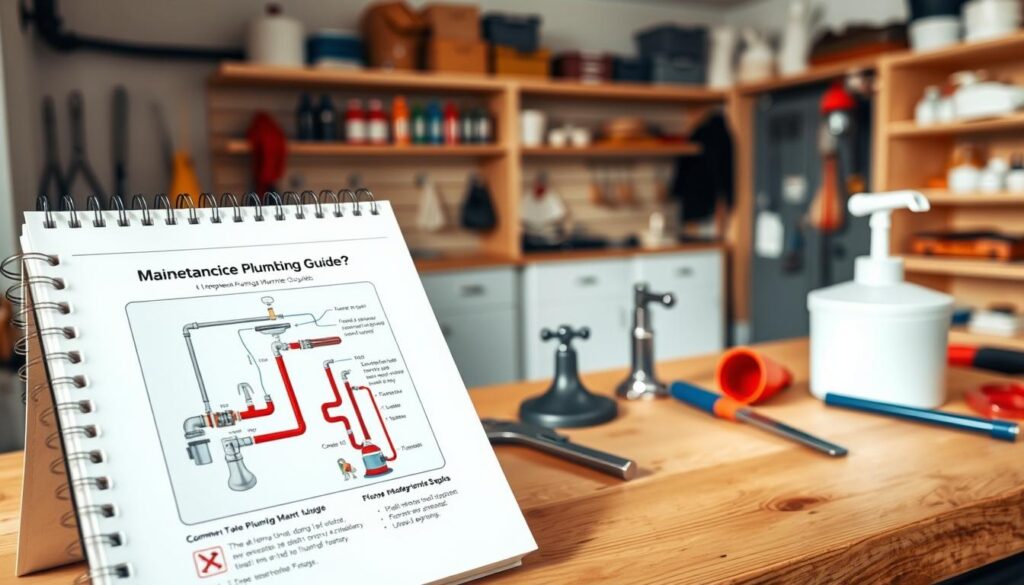
Proactive plumbing maintenance can save homeowners time and money. Regular maintenance can prevent many common plumbing issues, reducing the need for costly repairs and minimizing disruptions to daily life.
Regularly Check for Leaks
Checking your plumbing system regularly for leaks is a crucial preventative measure. Leaks can lead to significant water damage and increase your water bills. To check for leaks, monitor your water meter and look for signs of moisture or water damage around faucets, toilets, and pipes.
By identifying leaks early, you can avoid the headaches associated with water damage and costly repairs. This simple step is a key part of any plumbing maintenance guide.
Clean Out Drains
Cleaning out drains is another essential maintenance task. Clogged drains can lead to backups and overflows, causing damage to your home. Use a drain snake or plunger to clear clogs, and consider using a natural drain cleaner to maintain your drains.
Regular drain cleaning can help prevent plumbing emergencies and keep your plumbing system running smoothly. It’s a simple yet effective way to maintain your home’s plumbing.
Water Heater Maintenance
Ensuring your water heater is well-maintained can significantly impact its efficiency and longevity. Proper water heater maintenance is a critical aspect of a comprehensive plumbing maintenance guide, helping homeowners avoid unexpected breakdowns and costly repairs.
Regular maintenance involves several key tasks, including flushing your water heater and checking its temperature settings. These simple steps can make a significant difference in the performance and lifespan of your water heater.
Flushing Your Water Heater
Flushing your water heater is an essential maintenance task that removes sediment and debris from the tank. Over time, these deposits can cause the heater to work harder, increasing energy bills and potentially leading to premature failure.
To flush your water heater, follow these steps:
- Turn off the power or gas supply to the heater.
- Connect a hose to the drain valve at the bottom of the tank.
- Place the other end of the hose in a suitable drainage area.
- Open the drain valve, allowing the tank to empty.
- Once the tank is empty, close the drain valve and remove the hose.
- Turn the power or gas supply back on.
Checking Temperature Settings
Checking and adjusting the temperature settings on your water heater is another crucial maintenance task. The ideal temperature is typically around 120°F (49°C), which is hot enough for household needs while minimizing the risk of scalding.
| Temperature Setting | Benefits | Risks |
|---|---|---|
| Below 120°F (49°C) | Energy efficiency, reduced risk of scalding | Potential for bacterial growth (e.g., Legionella) |
| 120°F (49°C) – 140°F (60°C) | Balanced energy use and safety | Risk of scalding if too high |
| Above 140°F (60°C) | Reduced risk of bacterial growth | Increased energy consumption, higher risk of scalding |
By following these easy plumbing repairs at home tips, homeowners can ensure their water heater operates efficiently and safely, providing a reliable supply of hot water for years to come.
Proper Toilet Maintenance
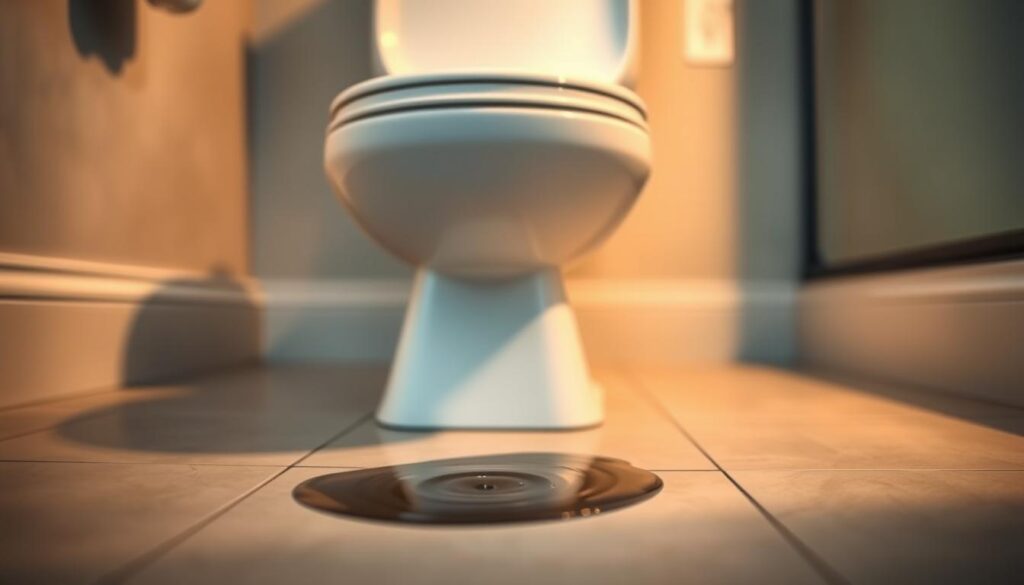
Maintaining your toilet properly can save you from unexpected plumbing issues. A well-functioning toilet is not just a matter of convenience; it’s also crucial for preventing water waste and reducing the risk of plumbing emergencies.
Avoiding Clogs
One of the most common issues with toilets is clogging. To avoid this, it’s essential to be mindful of what you flush. Never flush sanitary products, wet wipes, or large amounts of toilet paper, as these can easily cause blockages.
- Use a toilet plunger correctly to clear minor clogs.
- Consider using a drain snake for more stubborn blockages.
- Regularly check your toilet’s flushing power and adjust as necessary.
Silent Toilet Leaks
Silent toilet leaks can waste a significant amount of water without you even noticing. To detect these leaks, perform the dye test by adding a few drops of food coloring to the tank and waiting to see if the color appears in the bowl without flushing.
Regular maintenance, such as checking the flapper and fill valve, can help prevent silent leaks. Ensuring these components are in good condition is a simple yet effective way to avoid wasting water and prevent plumbing emergencies.
By following these simple plumbing troubleshooting tips, you can keep your toilet in good working order and avoid many common plumbing issues. Regular maintenance is key to a hassle-free plumbing system.
Understanding Drainage Systems
Understanding the intricacies of your home’s drainage system can save you from costly repairs down the line. A well-designed drainage system is essential for removing wastewater from your home efficiently.
Types of Drainage Systems
There are several types of drainage systems, each serving a specific purpose. The most common include:
- Sewer systems, which carry wastewater away from homes and businesses.
- Stormwater drainage systems, designed to manage rainwater runoff.
- Greywater systems, which reuse wastewater from sinks, showers, and washing machines for irrigation and flushing toilets.
For a comprehensive plumbing maintenance guide, it’s crucial to understand these systems and their roles.
Common Drainage Issues
Drainage issues can lead to backups, clogs, and other problems. Common issues include:
| Issue | Cause | Solution |
|---|---|---|
| Clogged drains | Debris, grease, and hair accumulation | Use a plunger or plumbing snake; consider DIY plumbing hacks like baking soda and vinegar. |
| Slow draining | Partial clogs or pipe damage | Inspect and clean drains regularly; use chemical drain cleaners with caution. |
| Backups | Clogs, tree root invasion, or sewer line damage | Call a professional plumber; consider upgrading your drainage system. |
Regular maintenance is key to preventing these issues. By understanding your drainage system and taking proactive steps, you can avoid costly repairs and ensure your home remains safe and healthy.
For homeowners, being aware of the type of drainage system you have and its specific needs is crucial. This knowledge, combined with regular maintenance, can significantly reduce the risk of drainage-related problems.
Tips for Dealing with Clogs
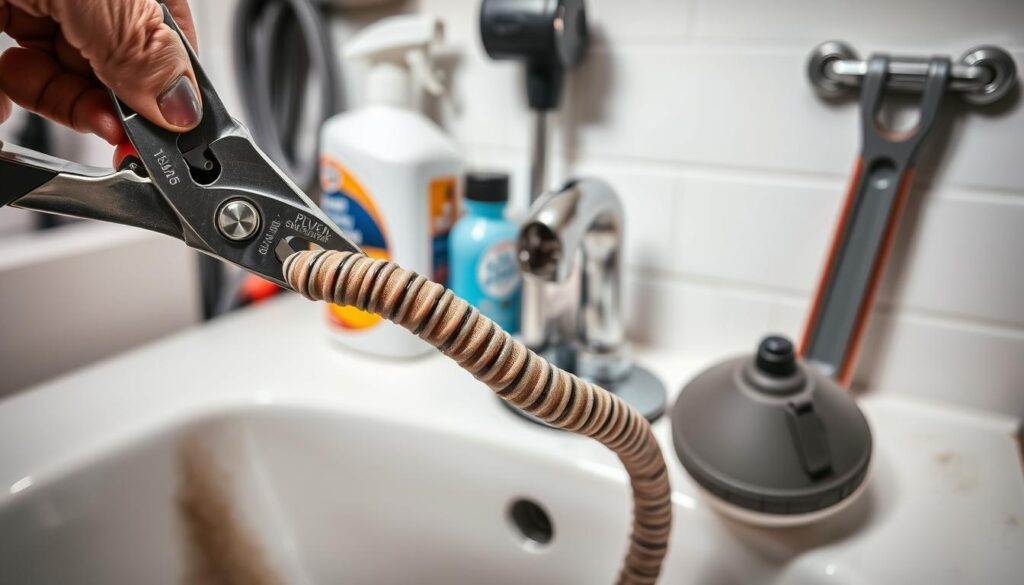
Dealing with clogs is a common challenge for homeowners, but there are effective solutions. Clogs can occur in various parts of the plumbing system, including sinks, toilets, and showers, often due to the accumulation of hair, soap, and other debris.
To tackle clogs effectively, it’s essential to have the right tools and techniques. One of the most common methods is using a plunger. For more stubborn clogs, chemical drain cleaners can be an option, but they come with their own set of considerations.
Using a Plunger Effectively
A plunger is a simple yet effective tool for clearing clogs. To use it effectively:
- Ensure the plunger is properly seated over the drain.
- Push down slowly and steadily until you feel resistance.
- Pull up sharply to create suction.
- Repeat this process several times until the clog is cleared.
For particularly stubborn clogs, you may need to use a plunger in conjunction with other tools, such as a drain snake. If you’re unsure about how to proceed, consider consulting a professional for emergency contractor services.
Chemical Drain Cleaners: Pros and Cons
Chemical drain cleaners can be effective at dissolving clogs, but they have both advantages and disadvantages.
| Pros | Cons |
|---|---|
| Quick and easy to use | Can damage pipes if used excessively |
| Effective against tough clogs | Contains harsh chemicals that can be harmful |
| Available at most hardware stores | May not be suitable for all types of pipes |
It’s crucial to weigh these factors and consider alternative methods, such as using a plunger or a drain snake, before opting for chemical drain cleaners. By choosing the right approach, you can resolve clogs efficiently and safely.
Plumbing Safety: Best Practices
Homeowners must be aware of the best practices for plumbing safety to prevent emergencies. Ensuring safety while performing plumbing tasks is crucial, and there are several measures that can be taken to minimize risks.
Turning Off Water Supplies
One of the fundamental steps in plumbing safety is turning off the water supply before starting any repair or maintenance work. This simple action can prevent water damage and reduce the risk of accidents. To do this effectively, homeowners should familiarize themselves with the location of the main shut-off valve. For more information on locating your main water shut-off, visit Mr. Rooter’s guide.
Turning off the water supply is not only crucial for safety but also helps in conserving water. It’s a practice that should be adopted for all plumbing tasks, from fixing leaky faucets to more complex pipe repairs.
Wearing Protective Gear
Wearing protective gear is another essential aspect of plumbing safety. This includes gloves, safety glasses, and sometimes even a face mask, depending on the nature of the task. Protective gear helps safeguard against potential hazards such as sharp edges, chemical splashes, and contaminated water. For additional tips on construction safety, you can refer to resources like World Civil Society.
| Protective Gear | Purpose |
|---|---|
| Gloves | Protect hands from cuts, abrasions, and chemical exposure |
| Safety Glasses | Shield eyes from debris, chemical splashes |
| Face Mask | Prevent inhalation of dust, fumes, and bacteria |
By adopting these best practices, homeowners can significantly reduce the risks associated with plumbing tasks. It’s also worth noting that while DIY plumbing can be cost-effective, knowing when to call a professional is equally important for safety.
As emphasized by plumbing experts, safety should never be compromised. “Safety is not just a precaution, it’s a necessity,” as highlighted in various plumbing safety guidelines. By following these guidelines and being mindful of the potential hazards, homeowners can ensure a safe and successful plumbing experience.
How to Locate Your Main Water Shut-off
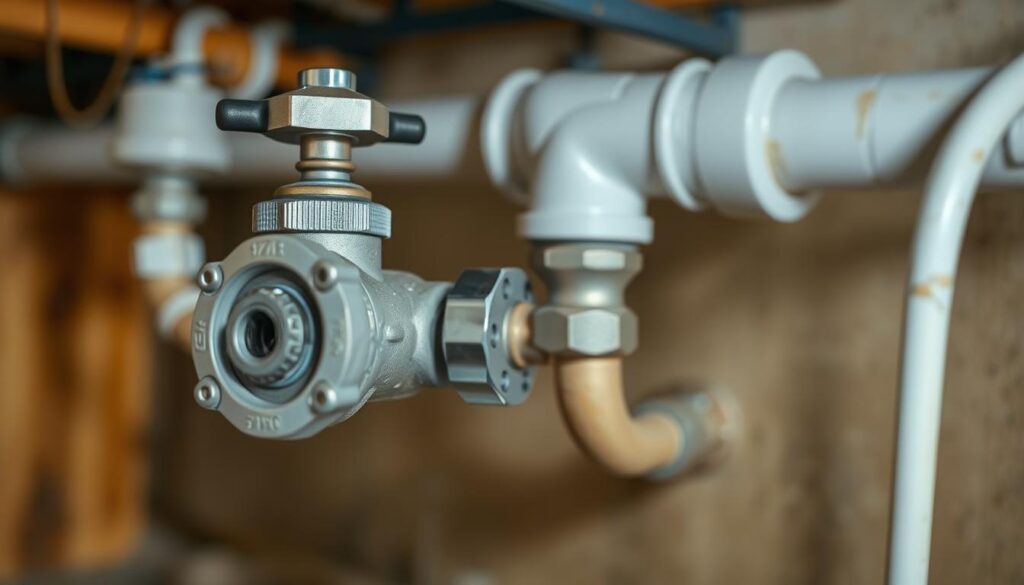
In the event of a plumbing emergency, knowing where your main water shut-off is can save you from significant water damage. This valve controls the water supply to your entire home, and being able to locate it quickly is crucial.
Identifying Shut-off Valves
Shut-off valves are typically found where water lines enter specific fixtures or appliances. For instance, you’ll usually find shut-off valves under sinks, behind toilets, and near washing machines. To identify a shut-off valve, look for a knob or lever that controls the water flow. Essential plumbing tools for beginners include an adjustable wrench to turn these valves.
For your main water shut-off, common locations include:
- Near the water meter
- Where the water line enters your home, often near the foundation or in the basement
- In a utility room or garage
Importance of Knowing Your Shut-off Location
Knowing the location of your main water shut-off valve is not just about emergencies; it’s also a part of routine DIY plumbing hacks that can save you money and hassle. For example, when doing maintenance or repairs on plumbing fixtures, you’ll need to shut off the water supply.
“A burst pipe can release hundreds of gallons of water per hour, making it essential to act quickly. Knowing where to shut off the main water supply can mitigate damage and reduce repair costs.”
To ensure you’re prepared:
- Locate your main shut-off valve and make sure it’s accessible.
- Check that the valve is functioning properly by turning it.
- Share this knowledge with all household members.
By understanding how to locate and operate your main water shut-off, you’ll be better equipped to handle plumbing emergencies and perform routine maintenance tasks effectively.
Basic Pipe Repair Techniques
Understanding how to repair pipes is a valuable skill for homeowners, helping prevent minor issues from becoming major problems. Pipe repairs can be challenging, but knowing the right techniques can make all the difference.
Dealing with Cracks and Leaks
Cracks and leaks in pipes can lead to significant water damage and waste if not addressed promptly. For minor leaks, using a pipe clamp or applying plumber’s tape can be an effective temporary fix. However, for more significant cracks or leaks, replacing the damaged section of the pipe may be necessary.
- Turn off the main water supply before starting any repair.
- Clean the area around the leak to ensure a good seal.
- For epoxy-based repairs, follow the manufacturer’s instructions for application and drying times.
For those unfamiliar with basic plumbing repairs, it’s essential to understand that dealing with cracks and leaks requires patience and the right materials.
When to Call a Professional
While many minor pipe repairs can be handled by homeowners, there are situations where calling a professional plumber is the best course of action. If the damage is extensive, or if you’re unsure about how to proceed, it’s wise to seek professional help to avoid further damage.
- If the leak is near electrical components or wiring.
- When dealing with complex pipe configurations or hard-to-reach areas.
- If the repair requires specialized tools or knowledge.
By knowing when to DIY and when to call a professional, homeowners can save time, money, and stress. Simple plumbing troubleshooting tips, like checking for loose connections or corroded pipes, can also help prevent future issues.
Seasonal Plumbing Preparation
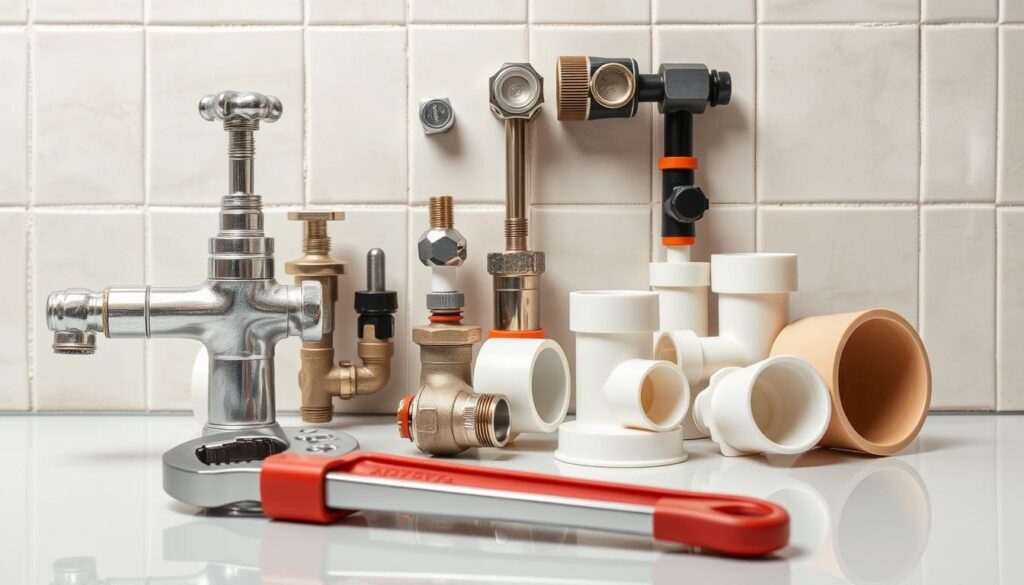
As the seasons change, it’s essential to prepare your plumbing system to avoid potential damage and costly repairs. Seasonal plumbing preparation is a critical aspect of home maintenance that can help prevent unexpected issues and ensure your plumbing system functions efficiently throughout the year.
Winterizing Your Pipes
Winterizing your pipes is a crucial step in preparing your plumbing for the cold weather. Freezing temperatures can cause pipes to burst, leading to costly repairs and potential water damage. To winterize your pipes, start by:
- Insulating exposed pipes in unheated areas, such as the garage, basement, or crawlspace.
- Disconnecting and draining hoses from outdoor faucets.
- Sealing any cracks or gaps in walls, floors, and around pipes with caulk or spray foam.
- Letting cold water drip from faucets served by exposed pipes.
Pipe Insulation Tips: Use foam pipe insulation or wrap pipes with heat tape or thermostatically controlled heat cables to protect them from freezing temperatures.
Preparing for Summer Showers
As the weather warms up, it’s essential to prepare your plumbing for the increased water usage during summer. Here are some steps to take:
- Inspect your irrigation system for leaks and damage.
- Check your sump pump to ensure it’s working correctly.
- Clear your gutters and downspouts to prevent clogs and ensure proper water flow.
| Season | Plumbing Tasks |
|---|---|
| Winter | Insulate pipes, disconnect hoses, seal gaps, let cold water drip |
| Summer | Inspect irrigation system, check sump pump, clear gutters |
By following these seasonal plumbing preparation tips, you can help prevent plumbing emergencies and ensure your plumbing system remains functional and efficient throughout the year.
Understanding Permits and Codes
Compliance with plumbing regulations is not just about avoiding fines; it’s about ensuring the safety and integrity of your plumbing system. When undertaking any plumbing project, understanding the importance of permits and codes is crucial.
Importance of Permits
Obtaining the necessary permits is a critical step in any plumbing project. Permits ensure that your work complies with local building codes and regulations, safeguarding against potential hazards. For instance, a permit is often required for significant plumbing work, such as relocating fixtures or installing new water heaters.
- Ensures compliance with local building codes
- Verifies that the work meets safety standards
- Provides a record of the work done, which can be beneficial for future reference or when selling your property
For more detailed information on building codes for plumbing remodels, you can visit Understanding Building Codes for Plumbing Remodels.
Knowing Local Plumbing Codes
Local plumbing codes are in place to ensure that plumbing systems are installed and maintained correctly. These codes can vary significantly from one jurisdiction to another, making it essential to familiarize yourself with the specific regulations in your area.
- Research local plumbing codes and regulations
- Consult with local building authorities or a professional plumber to ensure compliance
- Keep records of inspections and certifications related to your plumbing work
By understanding and adhering to these regulations, homeowners can ensure their plumbing projects are done safely and correctly, avoiding potential legal and safety issues down the line.
Water Pressure Troubleshooting

Effective water pressure troubleshooting is essential for preventing damage to your plumbing system. Water pressure issues can lead to leaks, pipe damage, and increased water bills. Understanding the signs of abnormal water pressure and knowing how to address them can save homeowners from costly repairs.
Signs of Low Water Pressure
Low water pressure can manifest in various ways, including:
- Weak flow from faucets and showerheads
- Slow-filling toilets
- Inconsistent water temperature
These signs often indicate issues such as clogged aerators, mineral buildup in pipes, or problems with the municipal water supply. Regular maintenance, like cleaning aerators and checking for mineral deposits, can help mitigate these issues.
Causes of High Water Pressure
High water pressure, on the other hand, can be just as problematic, causing:
- Leaks in pipes and fixtures
- Noise in pipes
- Premature wear on appliances
The causes often include faulty pressure regulators, thermal expansion in water heaters, or oversized supply lines. Installing a pressure regulator can help manage high water pressure and protect your plumbing system.
By understanding the signs and causes of water pressure issues, homeowners can take proactive steps to maintain optimal water pressure, ensuring the longevity of their plumbing system and avoiding unnecessary repairs.
Eco-Friendly Plumbing Solutions
As concern for the environment grows, homeowners are increasingly seeking eco-friendly plumbing solutions. These solutions not only help in reducing water consumption but also contribute to a more sustainable future.
Water-Saving Fixtures
One of the simplest ways to make your plumbing more eco-friendly is by installing water-saving fixtures. These include low-flow showerheads, faucets, and toilets that use significantly less water than their traditional counterparts.
For instance, low-flow toilets use less than 1.6 gallons per flush compared to the standard 3.5 gallons. Similarly, low-flow showerheads can reduce water usage by up to 2.5 gallons per minute.
| Fixture | Traditional Water Usage | Low-Flow Water Usage |
|---|---|---|
| Toilet | 3.5 gallons/flush | 1.6 gallons/flush |
| Showerhead | 4.0 gallons/minute | 1.5 gallons/minute |
| Faucet | 2.2 gallons/minute | 1.0 gallon/minute |
Benefits of Greywater Systems
Greywater systems are another effective eco-friendly plumbing solution. These systems reuse water from sinks, showers, and washing machines for irrigation and flushing toilets, thereby reducing the demand on potable water supplies.
Implementing a greywater system can lead to significant water savings. According to the Environmental Protection Agency, greywater reuse can save up to 50,000 gallons of water per year for a typical household.
By adopting these eco-friendly plumbing solutions, homeowners can contribute to water conservation efforts while also reducing their utility bills.
Planning for Future Plumbing Projects
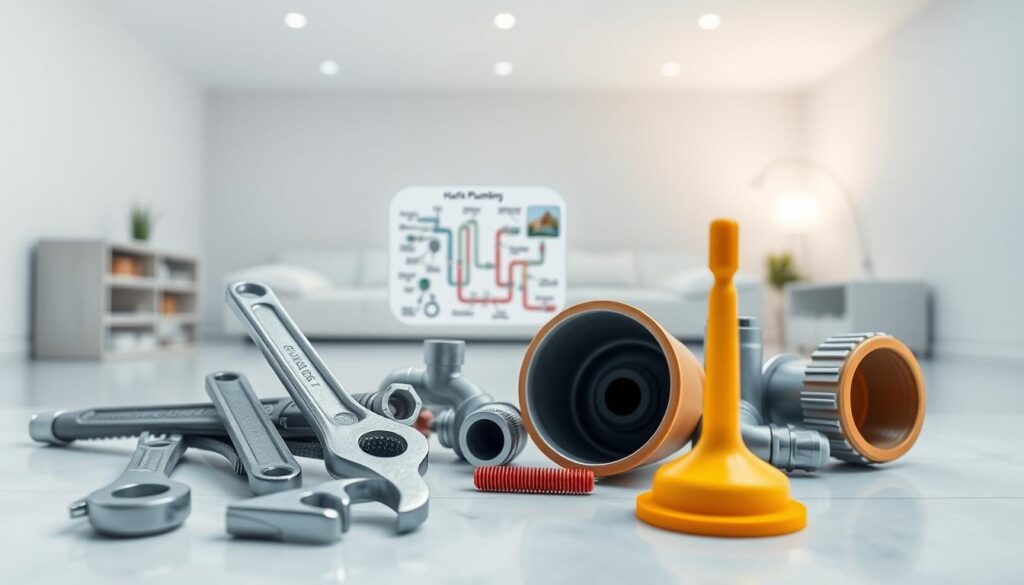
Planning ahead can make a significant difference in the outcome of your plumbing projects. Whether you’re considering a simple fixture upgrade or a comprehensive renovation, having a clear plan in place is essential for success.
Budgeting for Upgrades
One of the most critical aspects of planning for future plumbing projects is budgeting. It’s essential to determine how much you’re willing to spend on your project and to stick to your budget. Consider the costs of materials, labor, and any necessary permits. For complex projects, it’s a good idea to get quotes from multiple contractors to ensure you’re getting the best value.
When budgeting for plumbing upgrades, it’s also important to consider the long-term benefits. For instance, installing water-saving fixtures can reduce your water bills over time. You can find more information on how to plan plumbing for a new home build in NYC on the Harris Water Main and Sewers website.
Researching Local Plumbers
Another crucial step in planning for future plumbing projects is researching local plumbers. You’ll want to find a reliable and skilled plumber who can complete your project efficiently and effectively. Start by asking friends, family, or neighbors for recommendations. You can also check online reviews and ratings to get a sense of a plumber’s reputation.
When researching local plumbers, consider factors such as their experience with projects similar to yours, their licensing and insurance, and their availability. It’s also a good idea to get multiple quotes and to ask about their warranty and guarantee policies.
By taking the time to plan carefully and budget appropriately, you can ensure that your plumbing project is a success. With the right planning and the right professionals, you can achieve your plumbing goals and enjoy a safe, functional, and efficient plumbing system.
Resources for Homeowners
Having the right resources can help homeowners tackle plumbing tasks with confidence. By leveraging plumbing resources, individuals can gain the knowledge needed to perform DIY plumbing hacks effectively.
Valuable Guides and Literature
For those looking to expand their plumbing knowledge, several guides and books are available. These resources cover a range of topics, from basic plumbing systems to advanced DIY plumbing hacks. Notable publications include “The Homeowner’s Plumbing Guide” and “Plumbing for Dummies.”
Online Support and Tutorials
In addition to printed materials, online tutorials and communities offer valuable support for homeowners. Websites like The Spruce and This Old House provide comprehensive guides and videos on various plumbing tasks. Participating in online forums can also connect individuals with experienced plumbers and DIY enthusiasts.
By utilizing these plumbing resources, homeowners can enhance their DIY skills, troubleshoot common issues, and make informed decisions about their plumbing systems.
